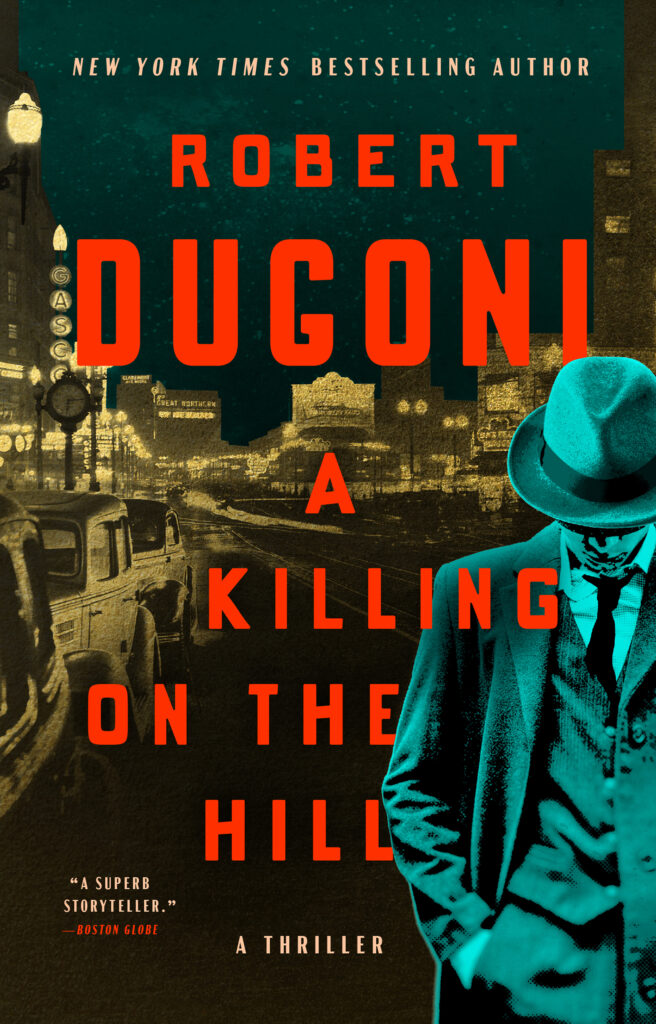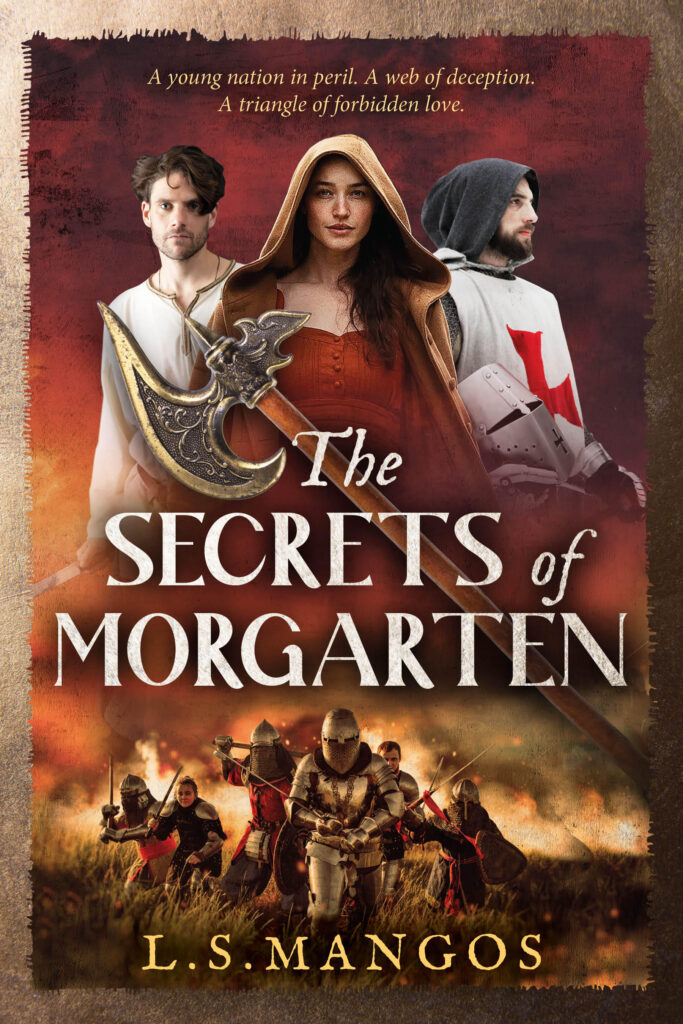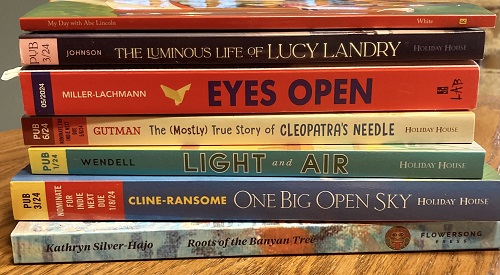Taking Liberties: At the Boundaries of Fictionalised History
 Two of my early novels are “historical fiction,” which is usually defined as a historical novel with predominantly fictional characters describing mainly fictional events. My later novels are “fictionalised history” featuring real historical characters only and dramatising real events. This is not the place to develop the distinction, but it is the place to start, because fictionalised history comes closest to the increasingly fragile boundary with non-fiction. This article is based on an inspired idea of my publisher, Bernadette Jansen op de Haar of Holland Park Press, who arranged a discussion between myself and a recognised expert on the subject-matter of my latest fictionalised history, The White Crucifixion (Holland Park Press, 2018). The White Crucifixion centres on the life of the artist Marc Chagall. The expert on Chagall was Monica Bohm-Duchen. Our discussion took place before a ticketed audience on 17 February 2019, in London.1
Two of my early novels are “historical fiction,” which is usually defined as a historical novel with predominantly fictional characters describing mainly fictional events. My later novels are “fictionalised history” featuring real historical characters only and dramatising real events. This is not the place to develop the distinction, but it is the place to start, because fictionalised history comes closest to the increasingly fragile boundary with non-fiction. This article is based on an inspired idea of my publisher, Bernadette Jansen op de Haar of Holland Park Press, who arranged a discussion between myself and a recognised expert on the subject-matter of my latest fictionalised history, The White Crucifixion (Holland Park Press, 2018). The White Crucifixion centres on the life of the artist Marc Chagall. The expert on Chagall was Monica Bohm-Duchen. Our discussion took place before a ticketed audience on 17 February 2019, in London.1
The White Crucifixion is a fictionalised memoir of Chagall’s life told in the first person. My fictional Chagall speaks directly to the reader about his life from birth to death, but also about his art and the fate of the people he painted, the people of his home town, Vitebsk, in present-day Belarus. That fate, and Chagall’s life, embraced some of humanity’s worst horrors – World War One, Russian communist totalitarianism and the Nazi occupation of Vitebsk.
“The White Crucifixion presents itself as a kind of biography,” Monica said, at one point in the discussion. The implied criticism was clear and, I thought, perfectly fair. By presenting my fiction in a way that could be interpreted as fact, I was blurring the boundary, straying over into non-fiction territory, or at least misleading the reader into thinking I was. I had met this charge before. An earlier novel, I Hogarth (Duckworth/Overlook, 2012),
was also a first-person fictional memoir of an artist. Some critics and reviewers assumed I was following the facts of Hogarth’s life when actually I was describing him wandering into and out of his paintings. Rightly or wrongly, I was flattered when my artifice succeeded so well. But The White Crucifixion does not do this. And it contains non-naturalistic elements less likely to be confused with real life. For example, the Prophet Elijah appears to the young Chagall at the Jewish Passover service and gives him his mission in life: to save the Jews by putting them on canvas.
This idea is taken from Chagall’s own memoir My Life, a source classed (arguably wrongly) as non-fiction. In it he writes: “The army advanced, and as they advanced, the Jewish population retreated … I felt like having them all put onto my canvases, to keep them safe.”2 Interestingly, Chagall’s memoir itself briefly became the focus of our discussion about boundaries, as I saw it as a piece of impressionistic poetic prose not unlike the prose poems of Dylan Thomas. To call it “unreliable” as to the facts, I said, is to misread its artistic intention. After all, Percy Bysshe Shelley wrote a poem called “Ode to the West Wind,” but you wouldn’t judge it in terms of its reliability as a weather forecast.
Then we came to the heart of the matter. “Throughout history, [fiction] authors have taken liberties with the facts,” Monica said. She was articulating a widely held view among historians – including art historians – that they deal in facts mined from the historical record, which fiction writers then change, perhaps cavalierly, and perhaps with deleterious results. To clear the ground, Monica was talking only about deliberate and conscious alteration of the historical record. In his article “Alternative Truth,” which appeared in HNR 83, February 2018, Douglas Kemp dealt with “clear historical anachronisms and errors.”3 Monica was not accusing me of that. Indeed, on the detail of Chagall’s life and art, and certainly on the wider issues like the Nazi attack on the Vitebsk ghetto, we spoke as equals. I had researched The White Crucifixion for over two years and read over a hundred books and articles. But the historical record we writers are accused of altering – the “facts,” if you like – is not the same as the truth. “Evidence is always partial. Facts are not truth, though they are part of it,” as Hilary Mantel put it in the 2017 Reith Lectures.4 Moreover, the historical record is incomplete, to quote Hilary Mantel again: “99% of the evidence, above all unrecorded speech, is not available to us.”
How far novelists can go to alter the historical record to move readers’ hearts is a central and never-ending debate among historical novelists, and I said so in the discussion with Monica. As there is no definitive formula, and probably never will be, I offered Monica and our audience two examples from The White Crucifixion – one where I felt I could change the historical record and one where I felt I could not.
The one where I felt I could make a change I described in answer to Monica’s question: “Why did you have Bella with Chagall at The Hive before the First World War when she was not there?” Bella Rosenfeld was the love of Chagall’s life, his first wife. The Hive was an artists’ colony in Montparnasse where Chagall lived along with – among many other artists – Soutine and Modigliani). So why the change? My answer was twofold. First, a “technical” answer. Chagall leaves The Hive on page 149 of my novel. That is way too late to develop the novel’s central love story. Secondly, I am interested in the poetic truth not only of Bella and Chagall’s love story, but of the love triangle between Bella, Chagall and the sculptor Osip Zadkine, which played out over most of Chagall’s adult life. I set the description of it in The Hive. As long as I catch the poetic truth of this relationship (hopefully), I am not too worried about who was really where and when.
“Bella being at The Hive adds sex and sexiness,” Monica said. Guilty as charged, but only as part of an exploration of the characters’ emotions. The implication was that the sexiness was added gratuitously. But it is difficult enough to write a novel from the heart. Adding extraneous elements according to what may (or may not) sell would make it almost impossible, as well as ruining the novel, which is why writers tend not to do it.
The part of the novel where I felt I could not make a change from the historical record was this: Chagall did not witness the Nazi creation of a ghetto in Vitebsk and its subsequent obliteration. He was in France at the time, where he was briefly arrested by the Nazis then released because of his fame. I felt I could not put him in Vitebsk in my fiction. Why not? As I said at the discussion, I don’t really know. But I could not make him witness those murders, those atrocities. Instead, I used the device of the Prophet Elijah who shows Chagall these events in a vision. Chagall painted the obliteration of the Vitebsk ghetto with some accuracy in his most famous painting, The White Crucifixion, from which I took the title of my novel. The painting shows Christ on the cross as a Jew wearing a Jewish prayer shawl. In the background you can see the fires as the ghetto is destroyed. You can see the Dvina river in Vitebsk with Jews fleeing across it.
What happened at the Dvina river is described in The Encyclopaedia of Camps and Ghettos: “The Germans turned the river crossing into a slaughter of the Jews. German soldiers in boats in the middle of the Dvina overturned boats and rafts that were carrying Jews and their belongings.”5 However, Chagall painted The White Crucifixion in 1938 and the murderous attack on the Vitebsk ghetto took place in July 1941. When I made that point at the talk, Monica said: “I accept that artists can foresee events.” I took that to be an acceptance of the role of artistic intuition and poetic truth generally.
I would say that artists and writers should foresee and adapt and invent events, using intuition and emotion, changing the historical record as necessary. The aspiration is always to make the reader feel at the moment of reading what the writer felt at the moment of writing. It has become common for writers of fictionalised history to issue a disclaimer, usually at the end of the novel, to the effect that this is a work of fiction and where the demands of drama conflict with the historical record, the writer has obeyed the demands of drama. In American Adulterer, Jed Mercurio uses the phrase “artistic licence,” a popular term for what we are discussing: “Numerous instances of artistic licence pertain to the details and chronology of events depicted in this novel.”6 In The White Crucifixion I did it differently: I used a quotation from the poet Blaise Cendrars, a friend of Chagall. The quotation is at the front of the novel: “The first virtue of a novelist is to be a liar.”7
Virtue. It’s a virtue.
References:
1. Holland Park Press
www.hollandparkpress.co.uk/photos-from-the-spiro-ark-white-crucifixion-event/ [accessed 29 March 2019].
2. Marc Chagall
My Life. Trans. Dorothy Williams (London: Peter Owen, 1965), p. 132.
3. Douglas Kemp
”Alternative Truth,” Historical Novels Review, Issue 83 (February 2018), p. 8.
4. Hilary Mantel
The Reith Lectures, July 2017, BBC website, https://www.bbc.co.uk/programmes/b08x9947
5. Martin Dean & Mel Hecker (eds)
The Encyclopaedia of Camps and Ghettos, 1933-1945. vol. 2 (Bloomington: Indiana University Press, 2012), p. 1746.
6. Jed Mercurio
American Adulterer (London: Jonathan Cape, 2009), p. 351.
7. Blaise Cendrars
Quoted in Dan Franck, Bohemian Paris. Picasso, Modigliani, Matisse, and the Birth of Modern Art (New York: Grove Press, 2001), p. 207.
About the contributor: Michael Dean’s upcoming novel is True Freedom – How America Came to Fight Britain for its Freedom (Holland Park Press, June 2019).
Published in Historical Novels Review | Issue 88 (May 2019)






